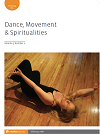-
f Image, imagination and the social imaginary: Solo improvisational dances of North Africa and the Middle East
- Source: Dance, Movement & Spiritualities, Volume 5, Issue 1, Jul 2018, p. 7 - 32
-
- 01 Jul 2018
Abstract
The solo improvisational dances of North Africa and the Middle East became part of popular discourse following Napoleon’s conquering of Egypt. Jean-Léon Gérôme (1824–1904) and other visual artists painted images depicting the dancers. Gustave Flaubert (1821–80) and others penned narratives of encounters with dancers. Oscar Wilde (1854–1900) wrote his play Salome (1893). Sol Bloom created the street scenes of dancers for the 1893 Chicago World’s Fair. Hollywood turned out countless ‘blood, sex and sand films’ by stars such as Rudolph Valentino (1895–1926). These images created in the nineteenth and early twentieth century became fixed in the popular imagination and dictated the conception of the dances of North Africa and the Middle East, and ultimately the ethos of the region itself. This article considers the impact these images have had on what Arjun Appadurai refers to as the social imaginary. By extension, it examines the impact of the imagination created within the vocabulary of the dances on the dialogue between North Africa and the Middle East, and the global community, including those who trace their lineage to this area and those who do not.


